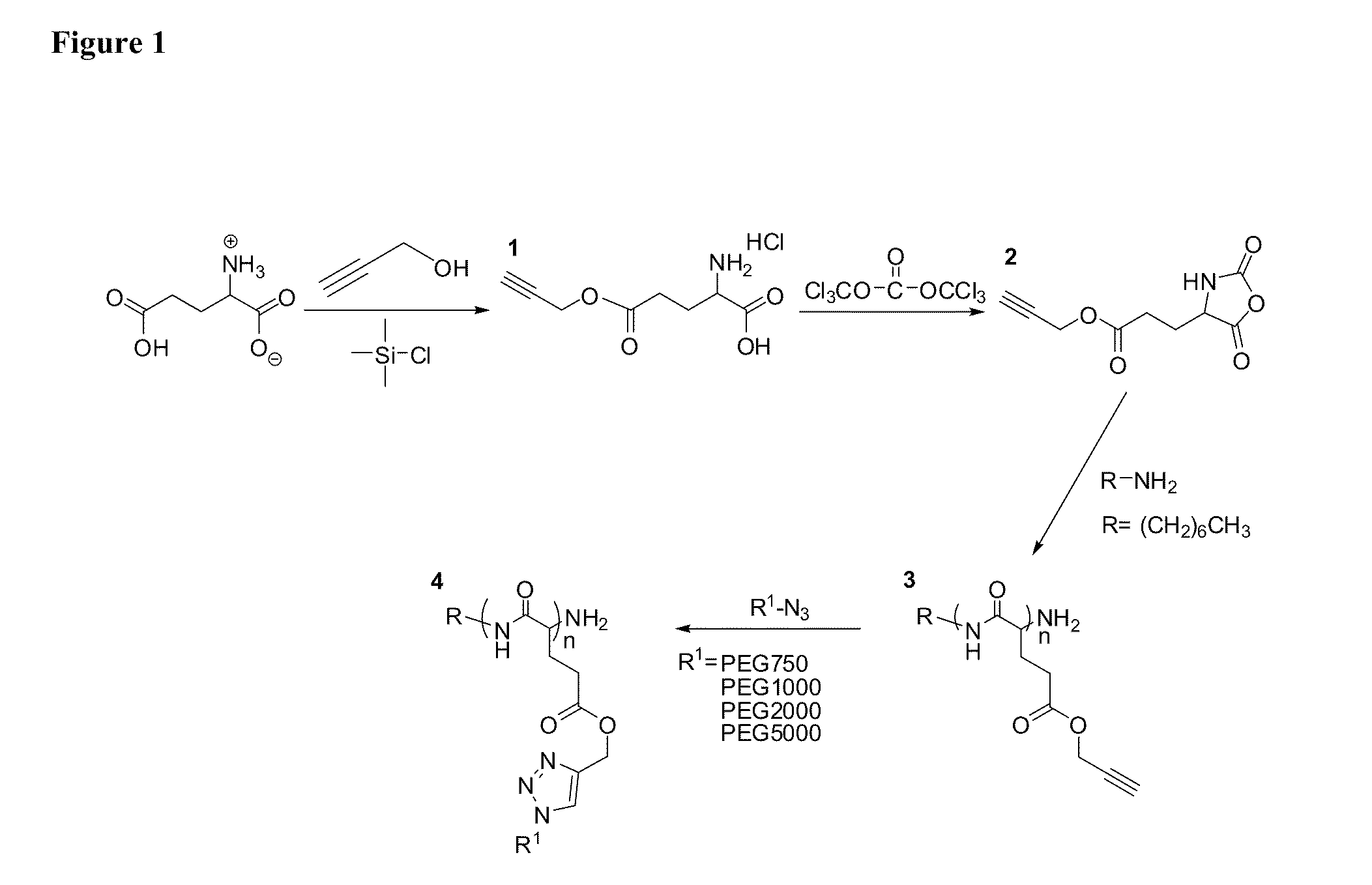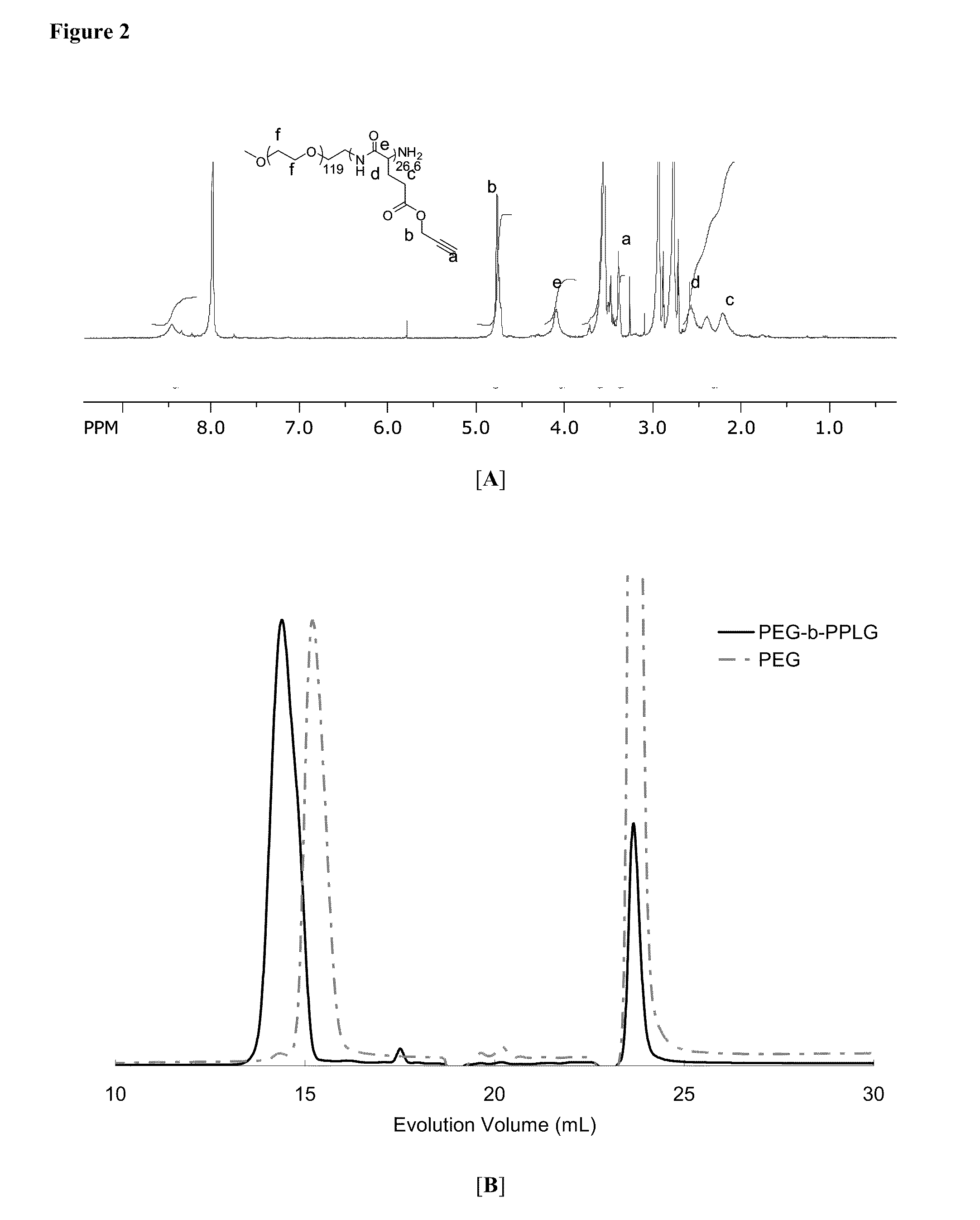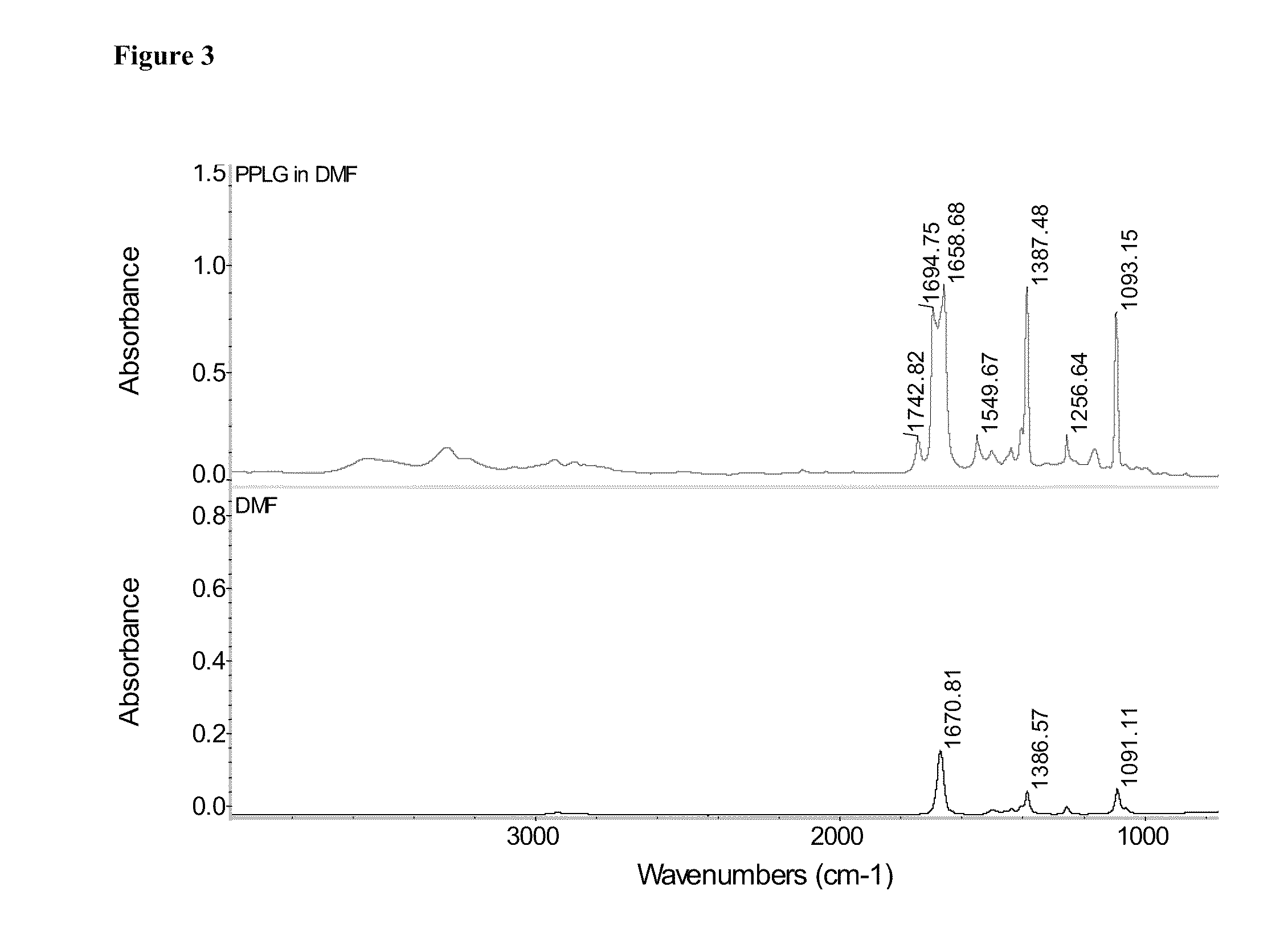Poly(Propargyl-L-Glutamate) and Derivatives Thereof
a technology of polypeptides and polypeptides, which is applied in the direction of powder delivery, dna/rna fragmentation, microcapsules, etc., can solve the problems of limited chemical moieties, limited functionalization of polypeptides synthesized by nca rop, and inability to directly polymerize functional monomers, etc., to achieve high yield and high yield
- Summary
- Abstract
- Description
- Claims
- Application Information
AI Technical Summary
Benefits of technology
Problems solved by technology
Method used
Image
Examples
Embodiment Construction
One aspect of the invention relates to a synthetic method to form highly functionalized, grafted polypeptides. For example, a N-carboxyanhydride (NCA) monomer of propargyl-L-glutamate and its polymer, PPLG, have been synthesized. This polymer provides a means of attaching a wide variety of molecules, varying in both size and hydrophobicity, to a polypeptide using a single step click reaction. The combination of NCA ring opening polymerization (ROP), and “click chemistry” provides a versatile synthetic approach to develop molecules which mimic the complex architecture of natural peptides. As described herein PEG chains with varying molecular weight from 750 Da to 5000 Da can be attached to the PPLG backbone at high grafting densities. For example, a grafting density of 95.8% was obtained at an alkyne / azide reaction ratio of 1 / 1, and a grafting density of 96.3-98.9% was obtained at reaction ratios of alkyne / azide of 1 / 2. The high efficiency achieved with PPLG is a result, at least in ...
PUM
| Property | Measurement | Unit |
|---|---|---|
| concentration | aaaaa | aaaaa |
| molecular weight | aaaaa | aaaaa |
| molecular weight | aaaaa | aaaaa |
Abstract
Description
Claims
Application Information
 Login to View More
Login to View More - R&D
- Intellectual Property
- Life Sciences
- Materials
- Tech Scout
- Unparalleled Data Quality
- Higher Quality Content
- 60% Fewer Hallucinations
Browse by: Latest US Patents, China's latest patents, Technical Efficacy Thesaurus, Application Domain, Technology Topic, Popular Technical Reports.
© 2025 PatSnap. All rights reserved.Legal|Privacy policy|Modern Slavery Act Transparency Statement|Sitemap|About US| Contact US: help@patsnap.com



